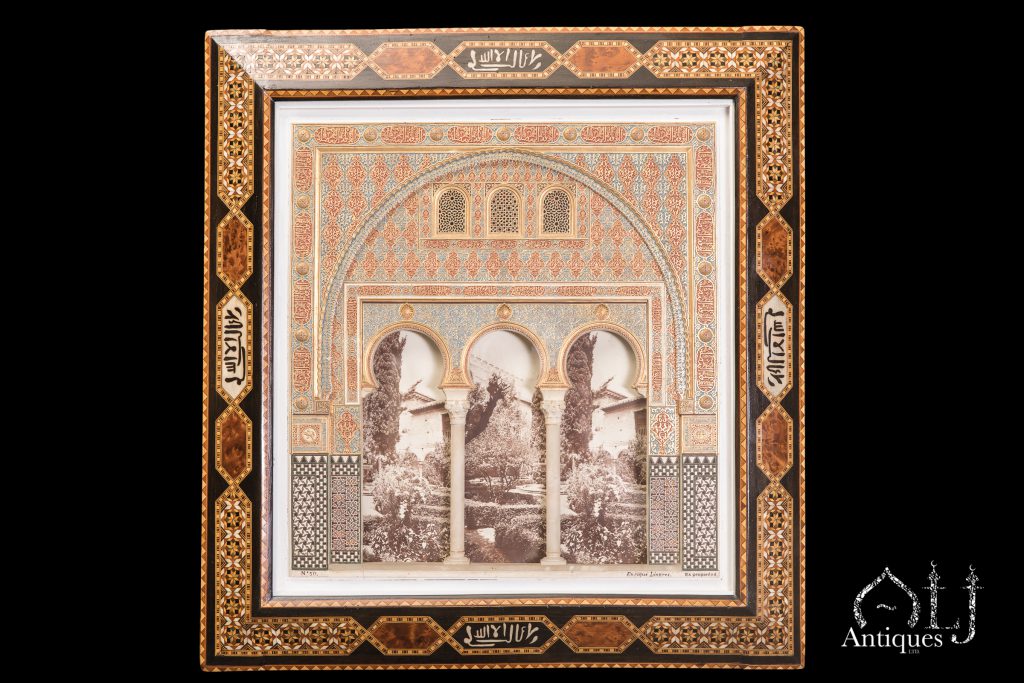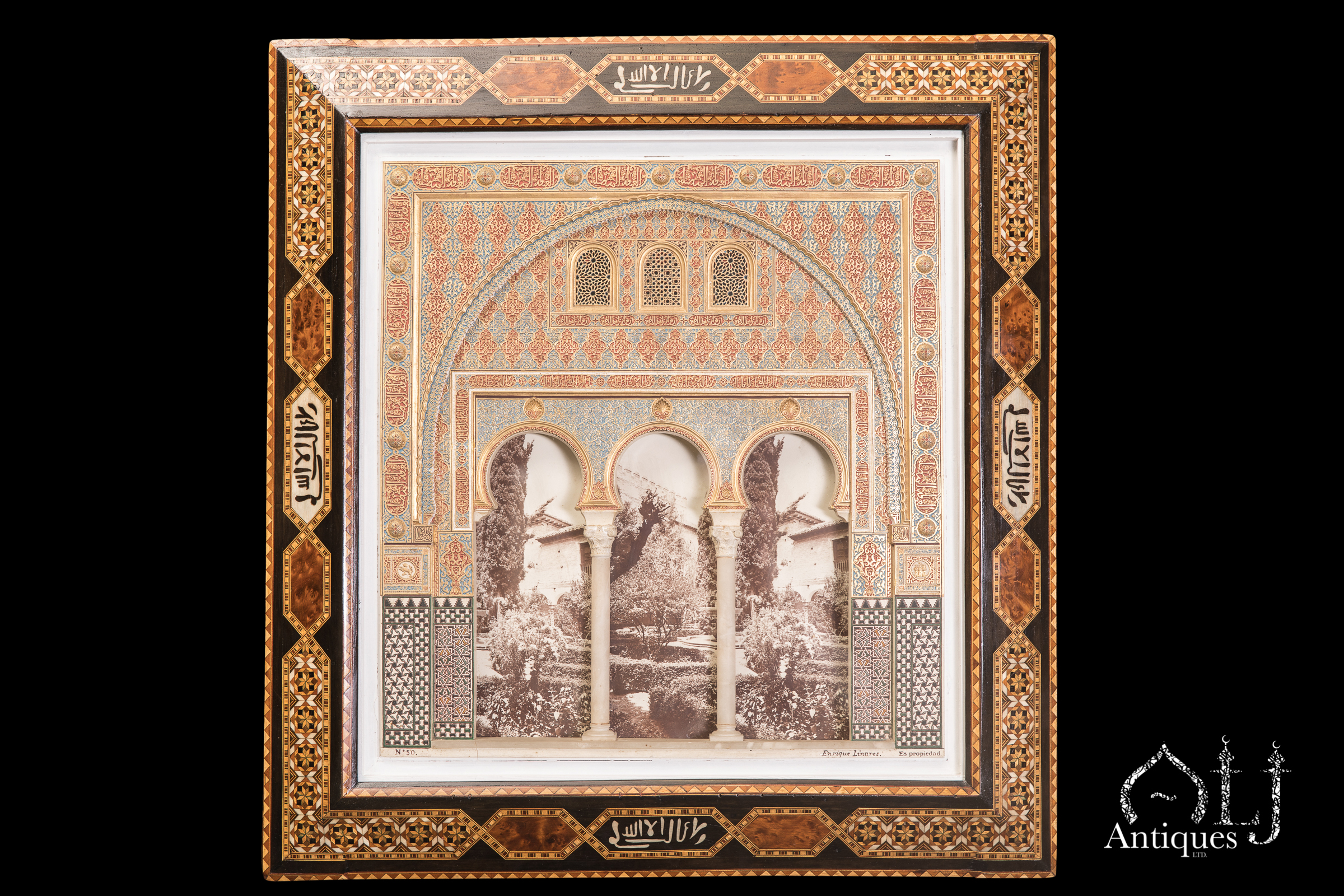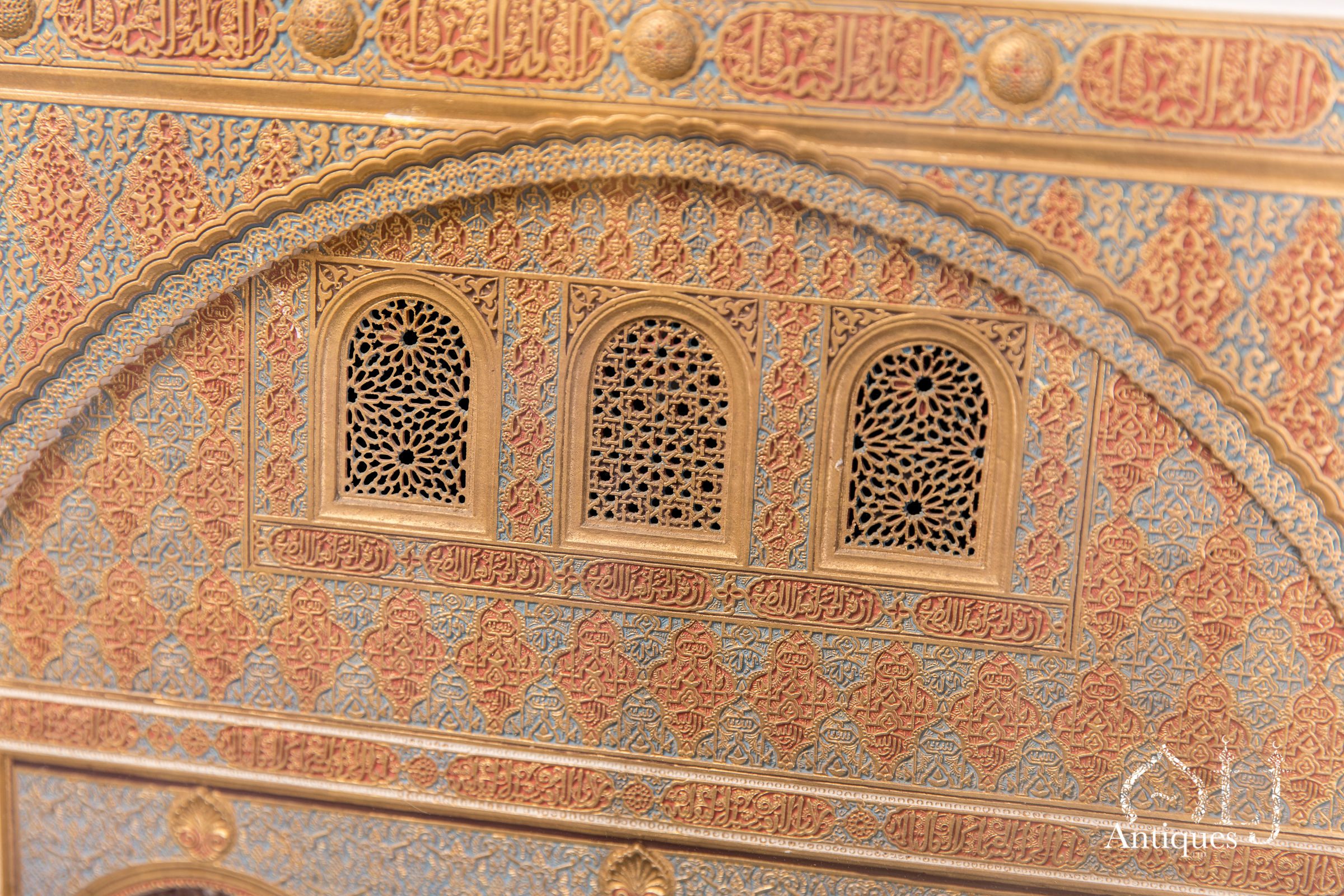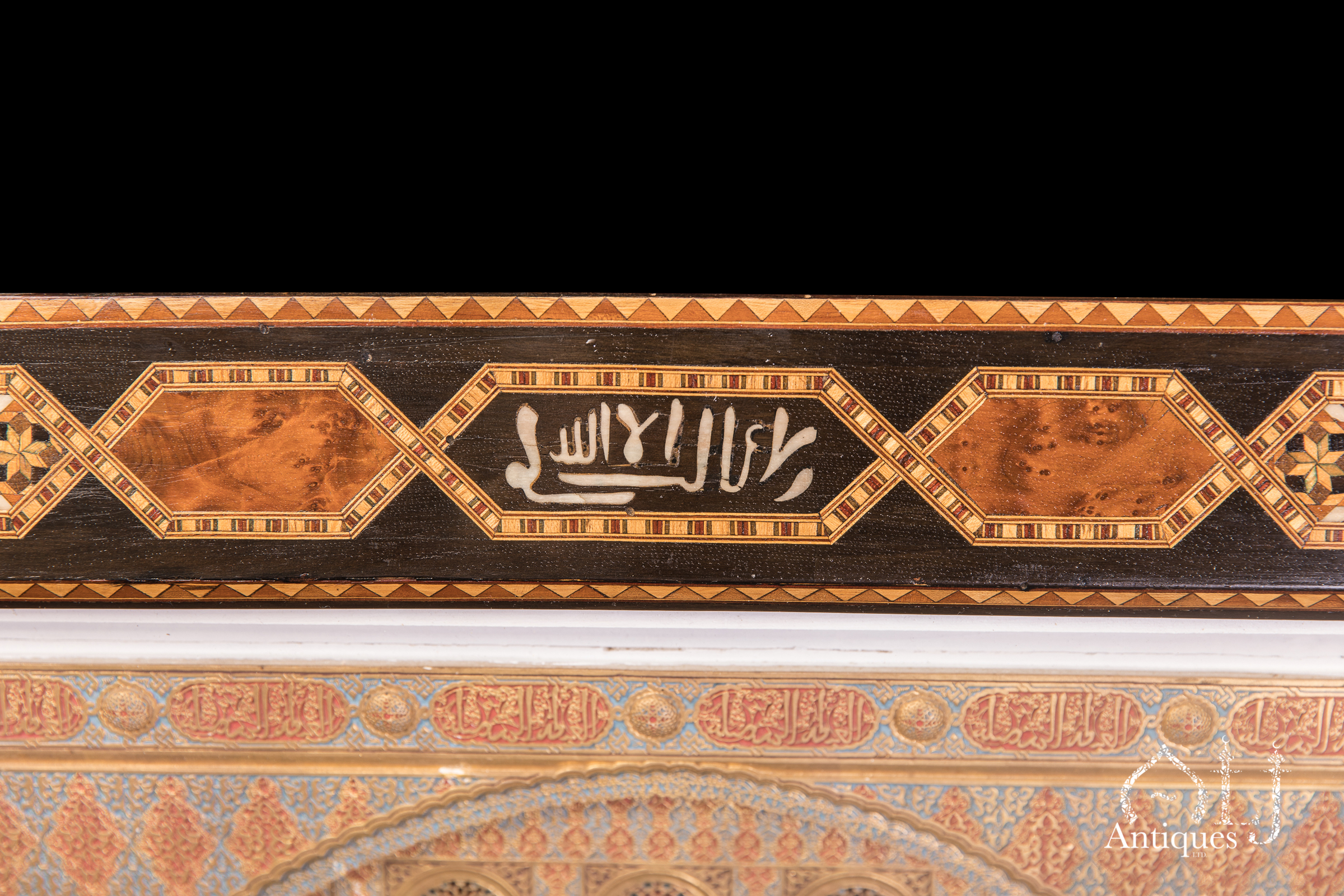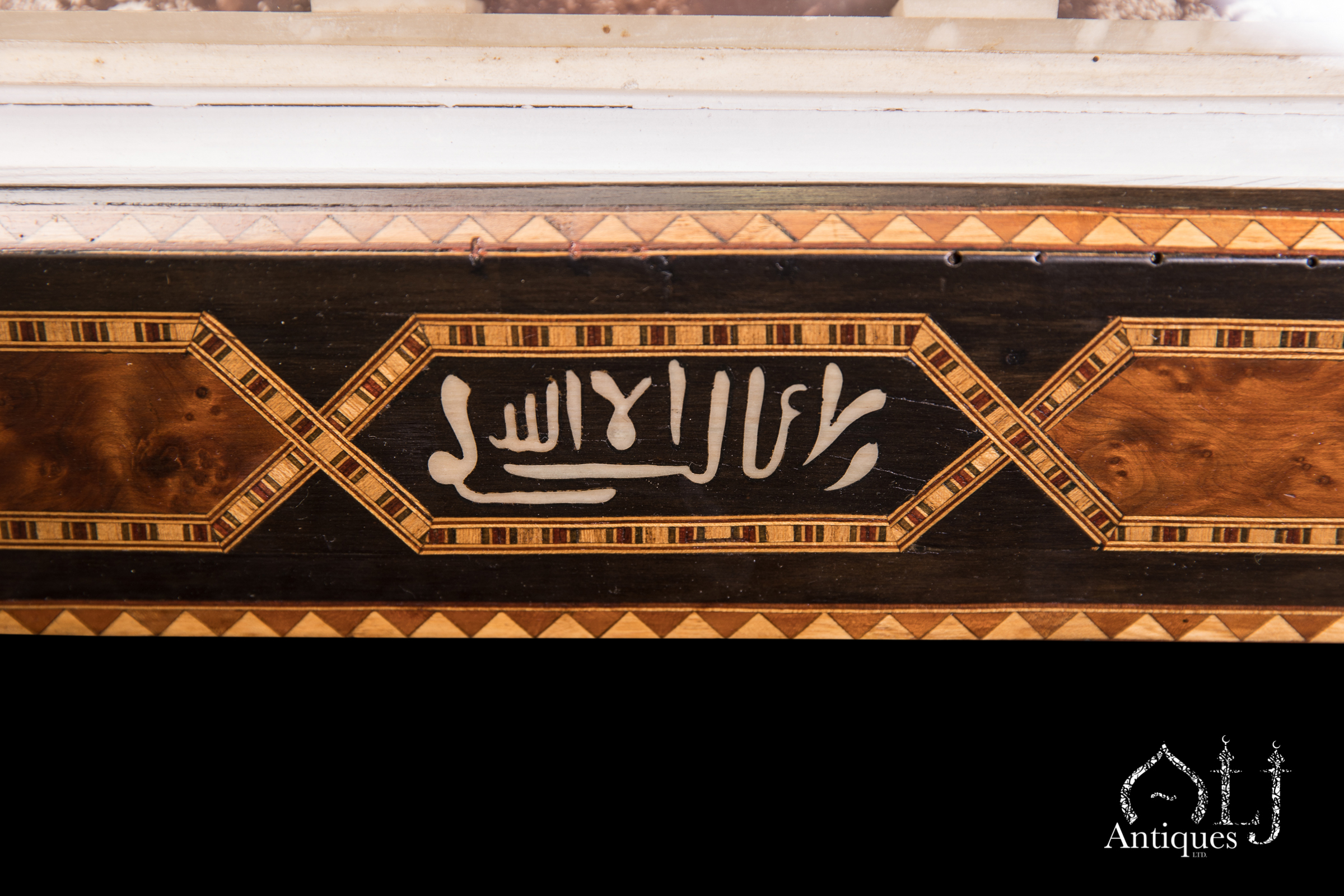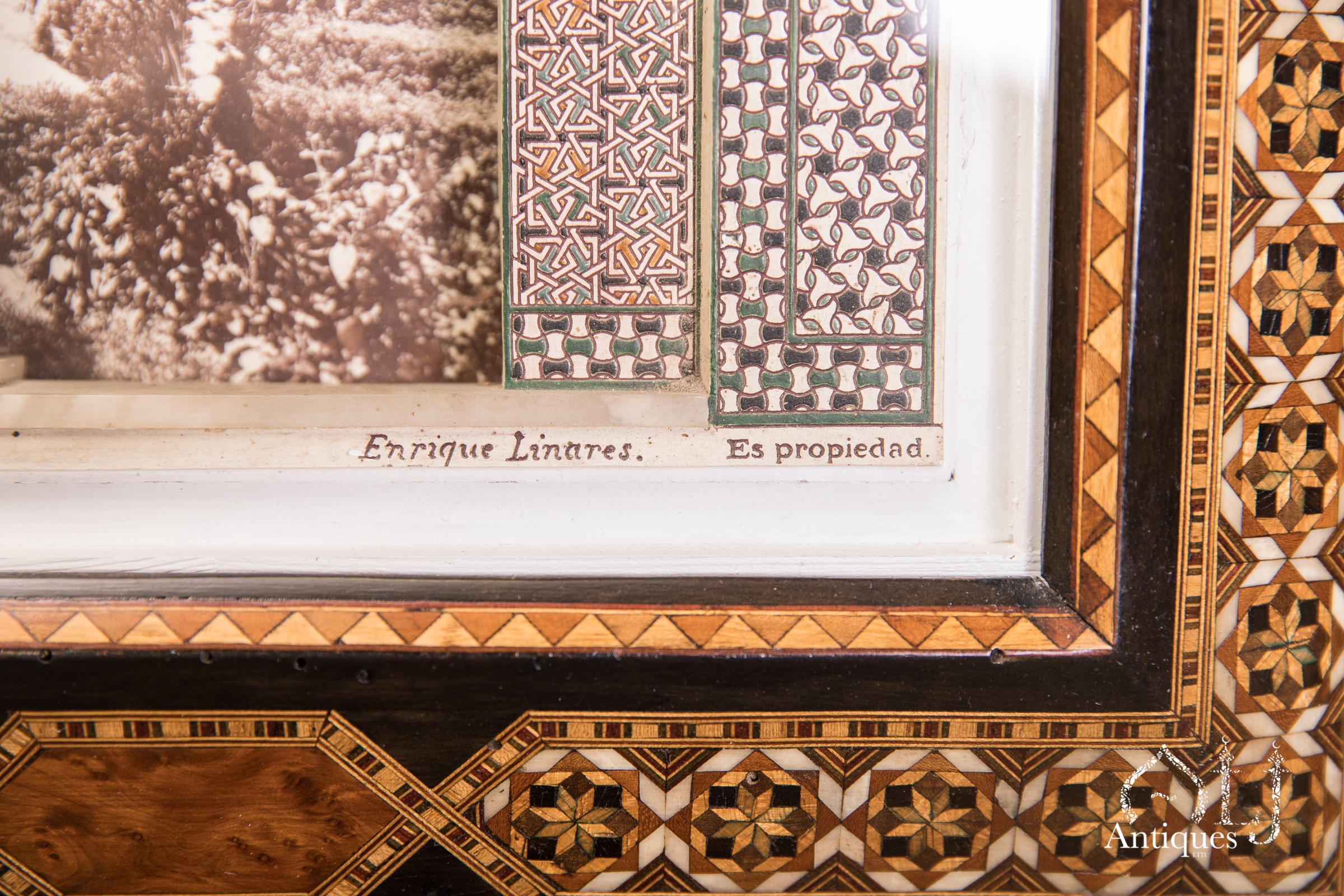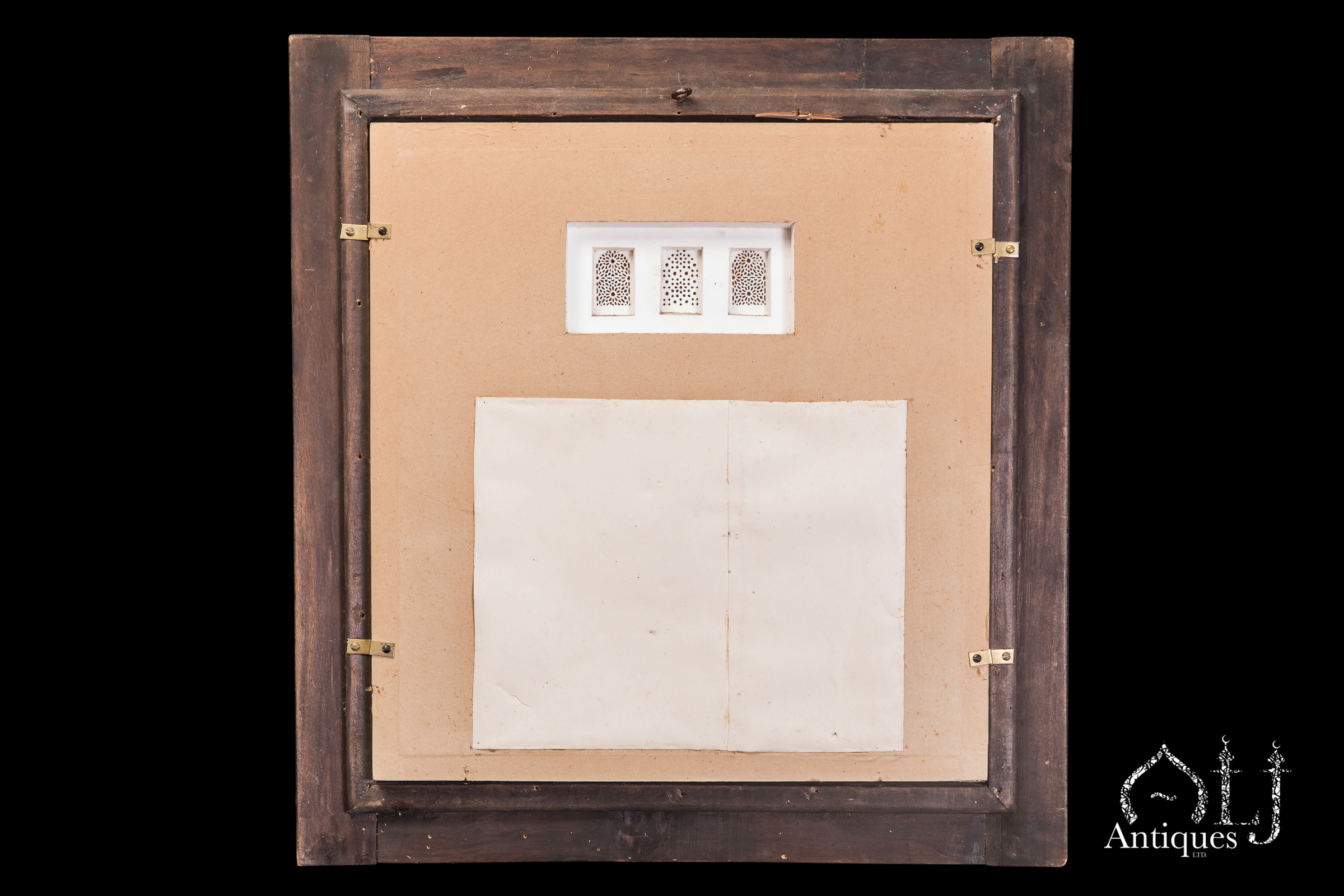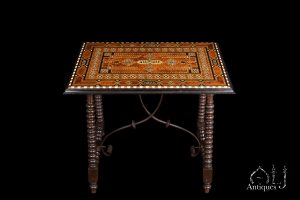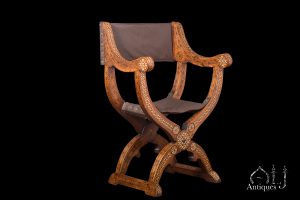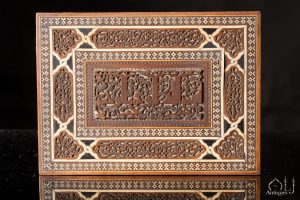Description
A fine framed architectural relief moulded plaster (stucco) model, based on a view from Alhambra Place, the lower part of the relief is signed no. 50 Enrique Linares, Es Propiedad.
The gilt and polychrome painted of red and blue model is of a rectangular shape, the relief is replicating one of the architectural facades of Alhambra Palace in Granada-Spain, the Alhambra palace is considered to be one of the most prominent 15th. century Moorish Nasrid Dynasty palaces in Andalusia-Spain, the current model is based on the romantic view from the north façade of the Myrtle Court.
These visible exterior parts of the walnut wooden frame are inlaid with various geometrical parquetry woodwork motives and ebonised wood including a very little percentage of small thin cut pieces of bone and ivory.
The parallel exterior with the lower border parts of the wooden frame are decorated with straight ribbons like motives of alternating triangles, the overall middle parts of the frame are decorated with various geometrical motives surrounded by plain ebony veneer, the mainly elongated hexagonal forms in the middle are outlined with ribbons of woodwork beadings, some of the octagonal cartouches are only veneered with plain walnut, the larger geometrical cartouches which makes up the four corners of the frame are mainly decorated with stellar motives, the centre of each star is surrounded with additional eight-pointed star and outlined by a halo of small rhombus shaped of thin cut pieces of bone and ivory, the stars are separated by confronted triangles, the four hexagonal shaped cartouches which are located in the middle of each part of the frame are inlaid with alternating ebony with bone or ivory to represent the Nasird dynasty emblem which is an inscribed motto of “La Ghalib Ila-Allah” or ( لا غالب إلا الله) translating to there is no conqueror but God.
The moulded plaster stucco model depicts a chosen façade from the palace and is generally decorated with various arabesque patterns adorned with various geometric Arabic calligraphic bands in the form of knots with floral and botanical designs.
The top of the model is decorated with a frame like motive which includes two alternating designs of roundels with oval shaped cartouches bearing devotional Islamic phrases in Arabic language.
Below a large arch containing three jail or mashrabiya of openwork windows surrounded by additional frame like motives, the overall spaces of the model are profusely decorated with alternating arabesque motives, devotional Islamic phrases and scallop roundels the lower part of the model is decorated with three curved archways supported with two marble columns, also the lower parts of the walls are painted with the Mosaic-azulejo or zellij like tiles, the word zellij is derived from the Arabic (al zulaycha), which means polished stone, it’s a kind of tile based decorative technique which involves assembling various patterns from finely cut pieces of coloured and glazed ceramic tiles.
The overall model is in its original excellent condition, with a genuine 19th century black and white photo fitted behind the triple arches and their two supporting marble columns depicting a view from the Alhambra Garden, also a wooden frame is protected by glass.
In 1883 AD. Enrique and his brother Abelard Linares had both founded a workshop within Alhambra palace in Granada specialising in making high quality architectural models depicting various views from Alhambra palace.
A similar model can be found in the Victoria & Albert Museum in London.
Registration of an item with ivory content: T72EJPWB.

